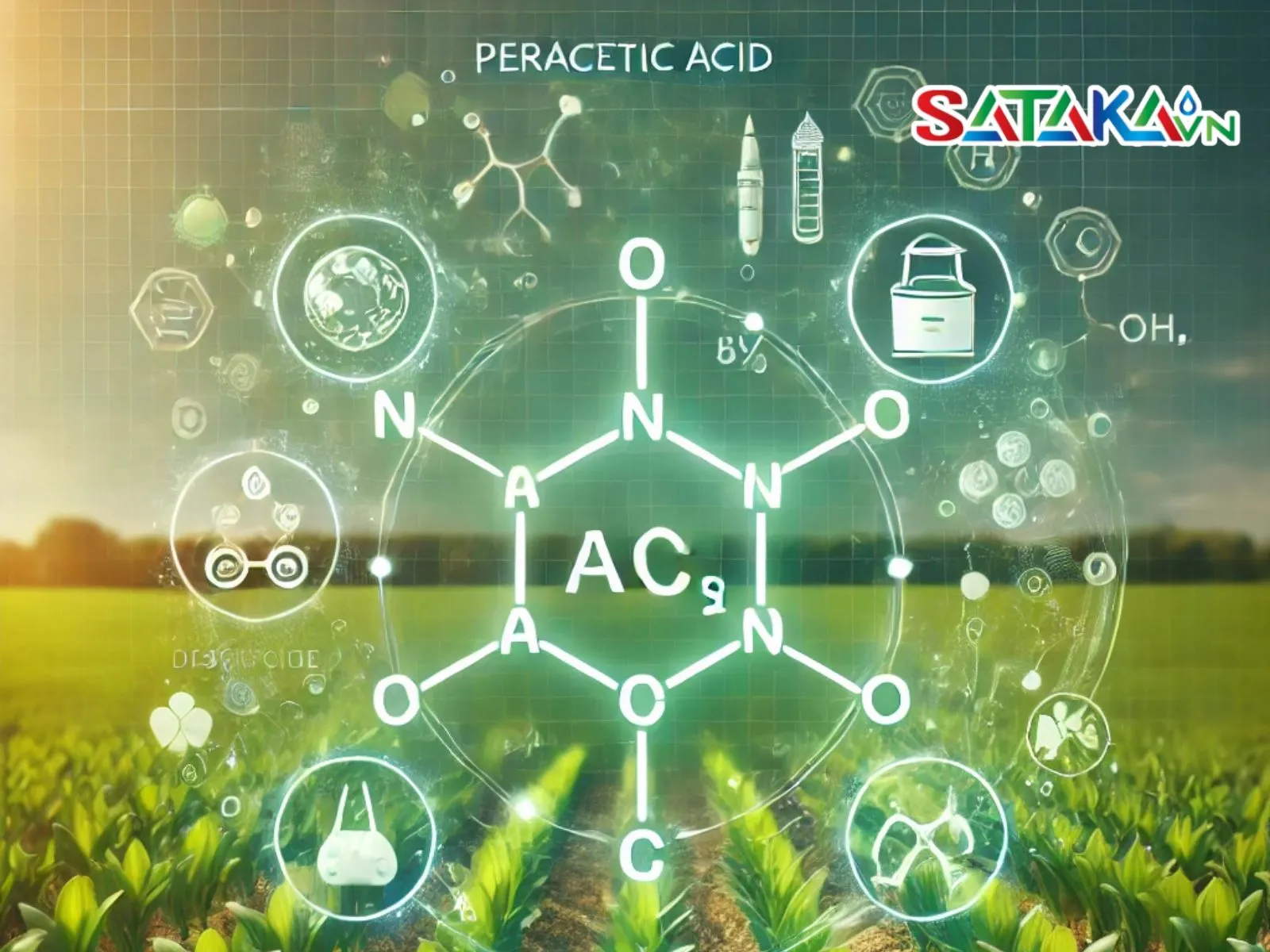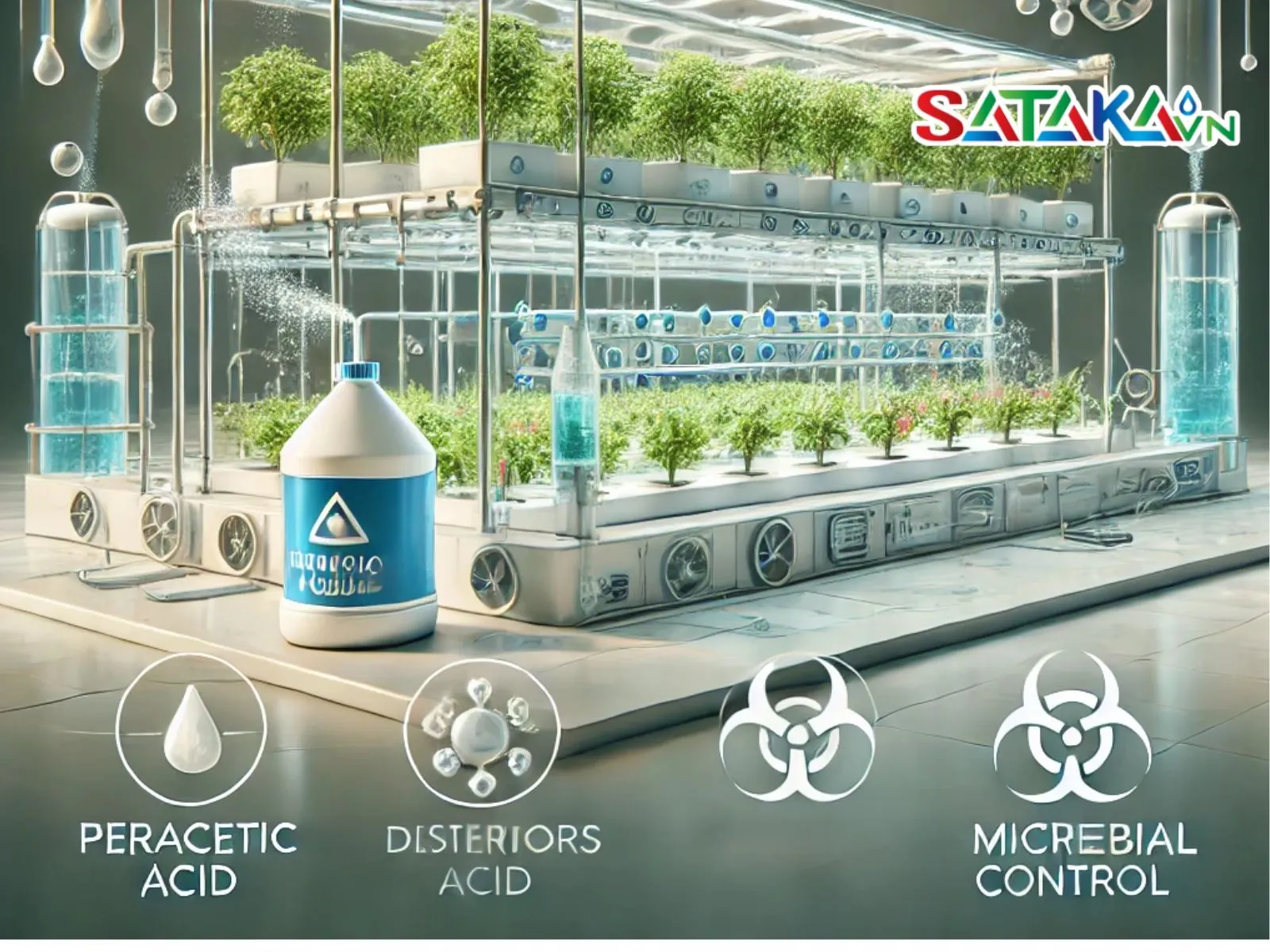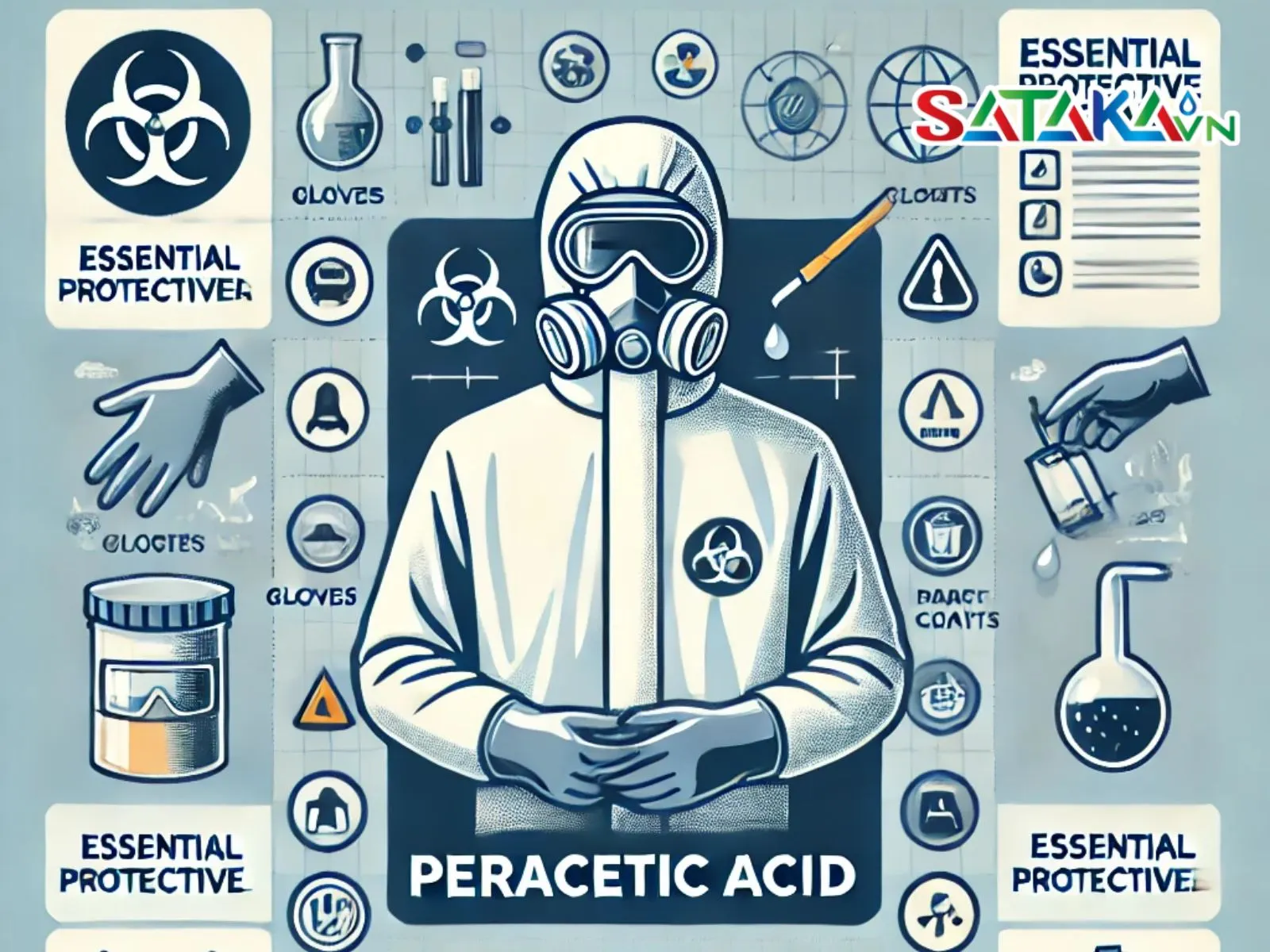Peracetic Acid (PAA) is a powerful disinfectant compound, often used in hydroponics to kill bacteria, fungi and protect plants from diseases caused by microorganisms.
Peracetic acid (PAA) is becoming increasingly popular in modern hydroponic farming. But what exactly is peracetic acid, and what specific benefits does it offer in agriculture? Join SATAKA as we delve deeper into this topic.
Peracetic acid (PAA), also known as peroxyacetic acid, is an organic compound created through the reaction of hydrogen peroxide and acetic acid. As a powerful oxidizer, it effectively kills bacteria, fungi, and other microorganisms. Thanks to its exceptional pathogen-fighting properties, PAA is widely used in various industries, particularly in agriculture and hydroponics.

What is Peracetic Acid?
PAA is a colorless liquid with a distinct vinegar-like smell. Upon contact with water, it breaks down into harmless components such as water, CO₂, and acetic acid. This makes PAA a safe and effective choice for growers, especially those aiming for a clean, residue-free growing environment.
PAA is a strong oxidizing agent often used for disinfection and disease control in hydroponic systems. Here are some of its notable applications:
PAA effectively eliminates bacteria, fungi, and viruses. It is commonly used to clean pipes, tanks, and irrigation systems, preventing the spread of pathogens within the hydroponic environment.
Water in hydroponic systems is susceptible to fungal and bacterial contamination. Adding small doses of PAA helps maintain clean water, reduces the risk of plant diseases, and enhances crop yield and quality.
Certain pathogens directly attack plant roots in hydroponic systems. PAA helps combat harmful organisms such as Pythium, Phytophthora, and Fusarium without harming plants when applied at appropriate concentrations.

Disinfect the hydroponic system
By maintaining a clean, pathogen-free hydroponic environment, PAA indirectly promotes healthy plant growth, improving photosynthetic efficiency and overall development.
After harvesting, PAA is used to disinfect hydroponic systems, including tanks, pipes, and tools, removing residue and pathogens in preparation for the next crop cycle.
PAA quickly breaks down into water, oxygen, and acetic acid after use, leaving no harmful residues in the environment. This makes it an ideal choice for sustainable farming practices.
To maximize its benefits, proper dosing and application methods are essential when using PAA in hydroponics. Recommended dosages depend on system conditions and disinfection goals. Some basic guidelines include:

Use the correct dosage
While PAA is safe when used correctly, it is crucial to follow these precautions:

Wear protective gear when using Peracetic Acid
Peracetic acid is an optimal solution for maintaining hygiene and controlling microorganisms in hydroponic systems. Its powerful disinfecting capabilities, residue-free nature, and rapid degradation make it increasingly popular in agriculture, particularly in modern hydroponic farming.
However, effective and safe usage requires strict adherence to dosage and procedural guidelines. Understanding the properties and applications of PAA enables growers to optimize hydroponic systems, protect plant health, and deliver high-quality produce.
Through this article, SATAKA has addressed key questions such as what peracetic acid is and how to use it safely. We hope this information helps you better understand PAA and apply it effectively in your farming practices.